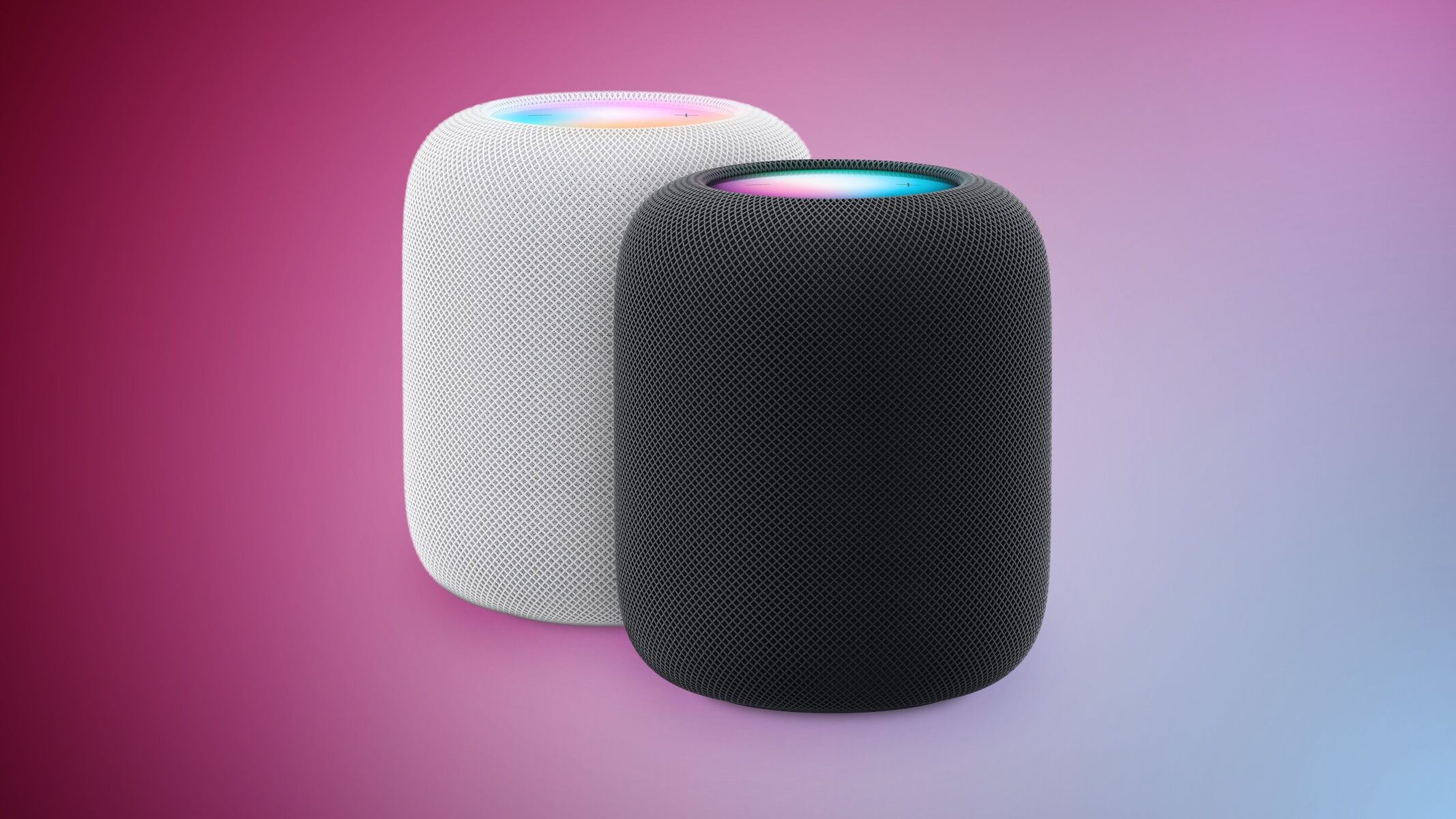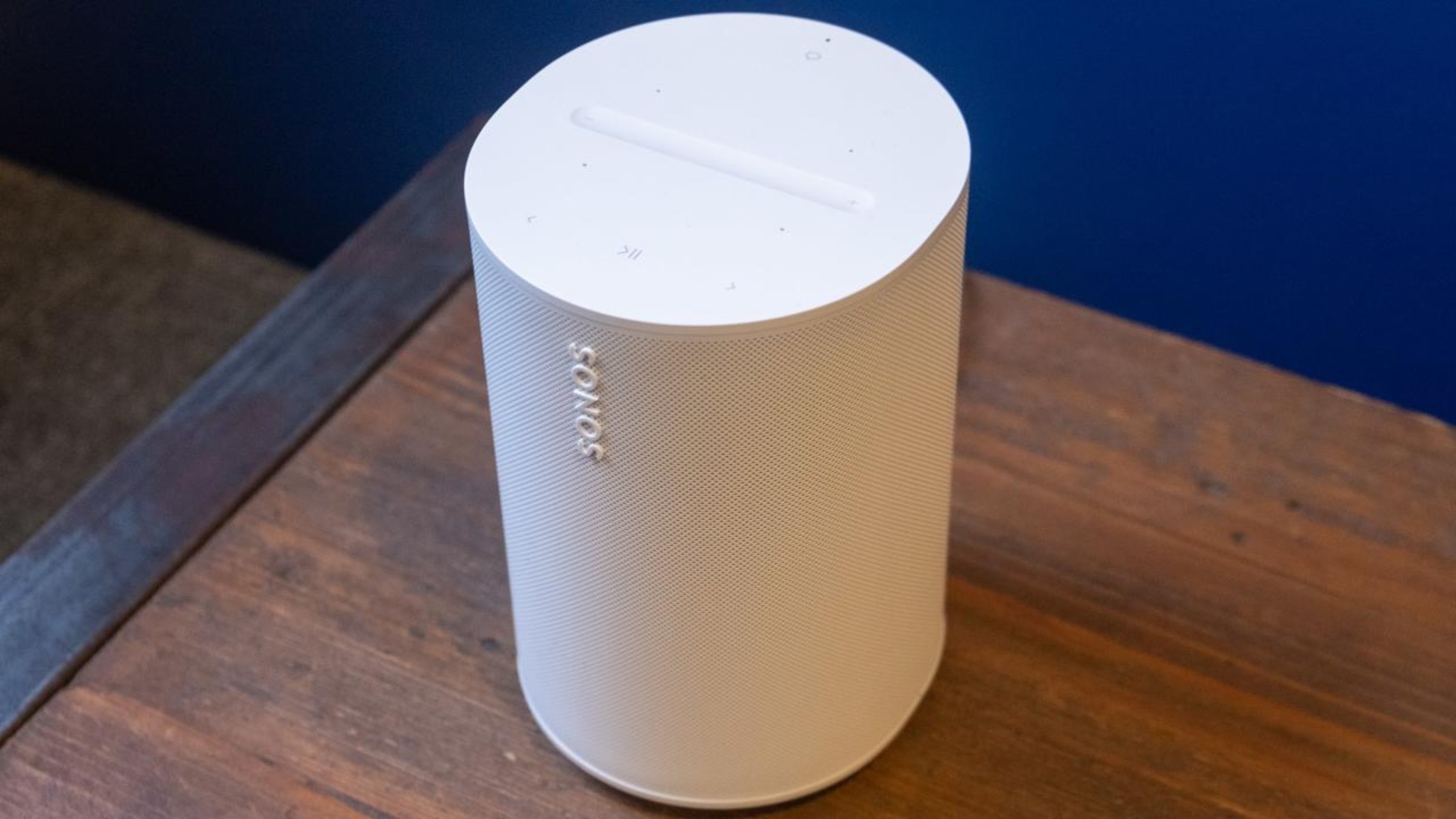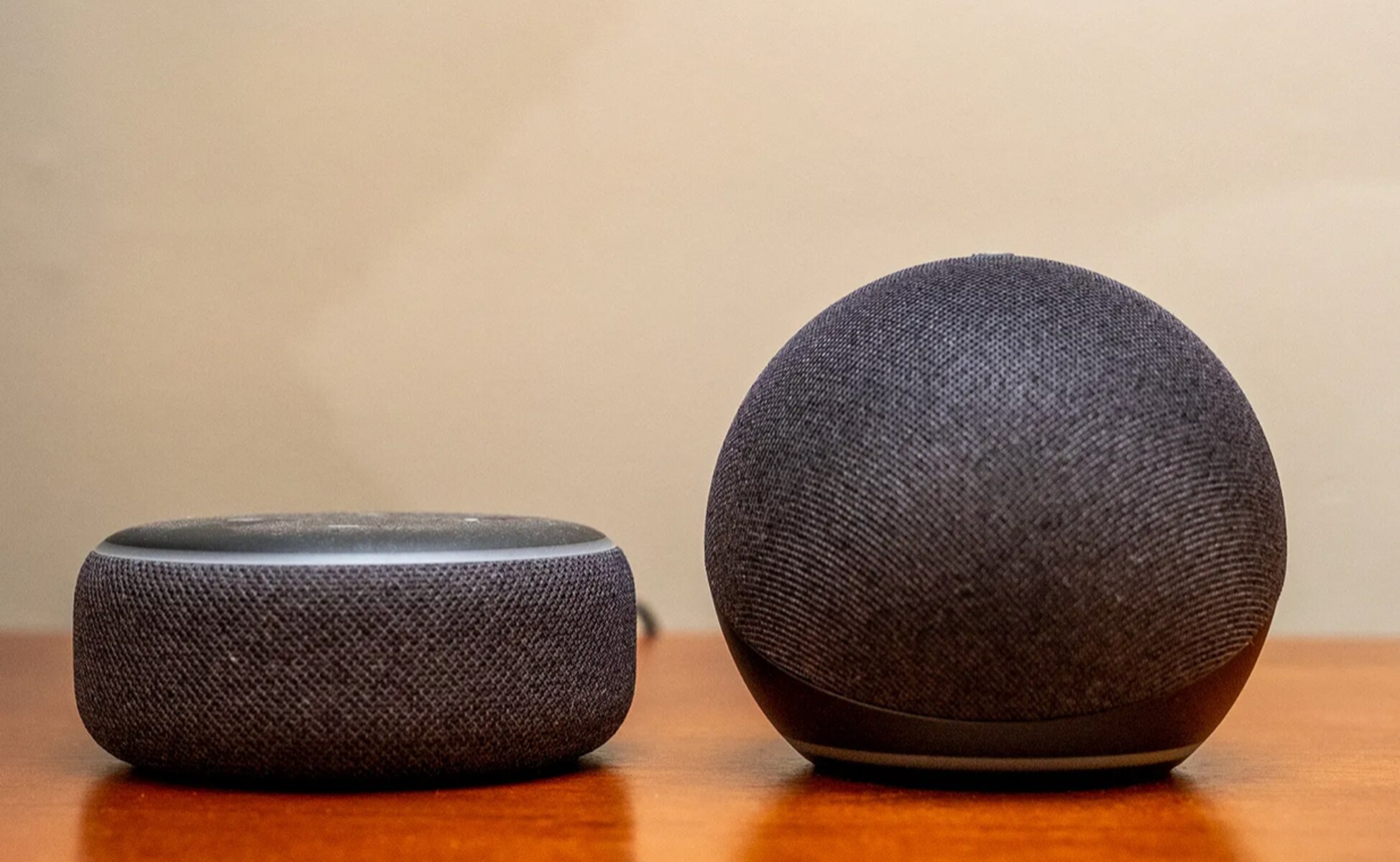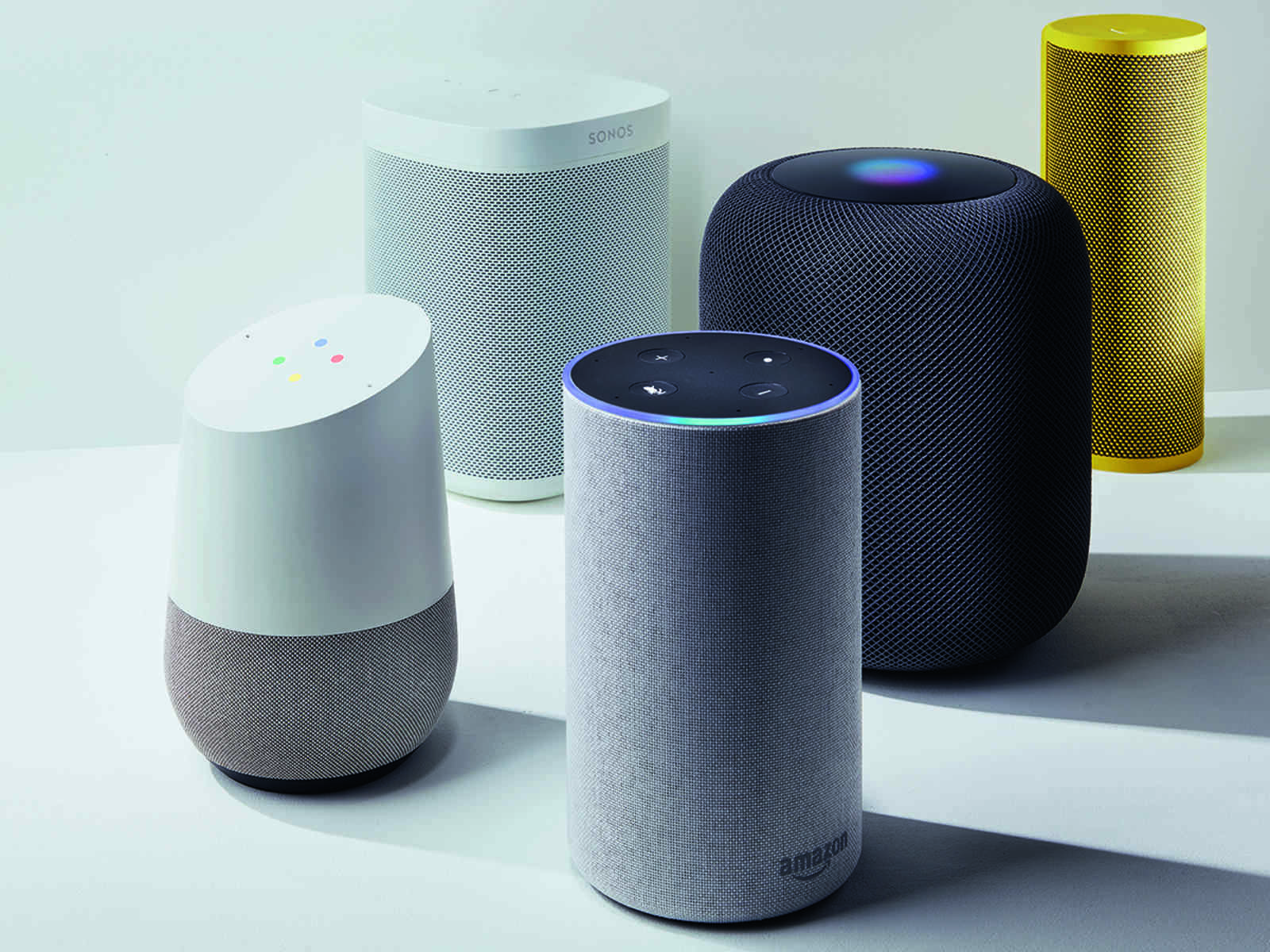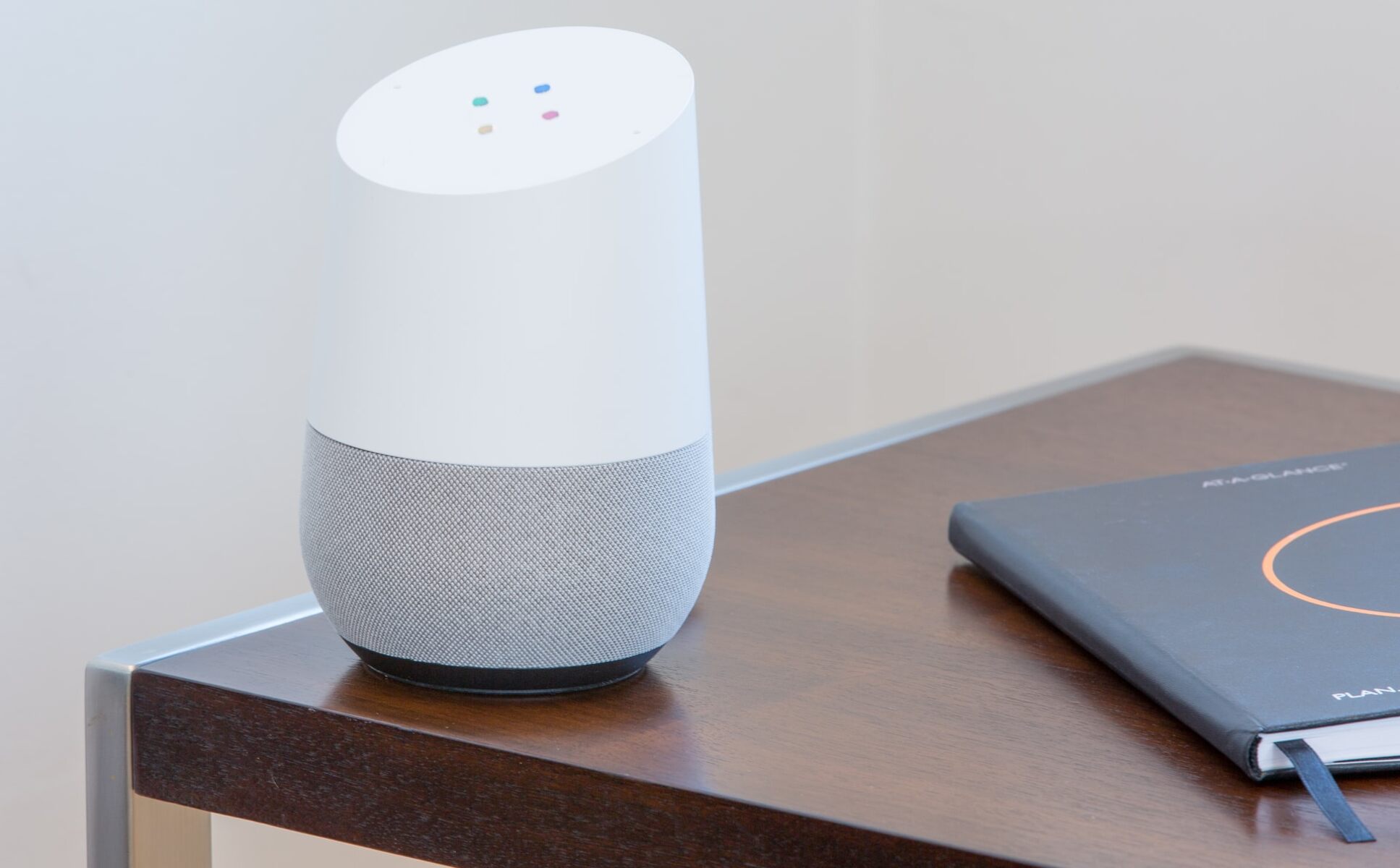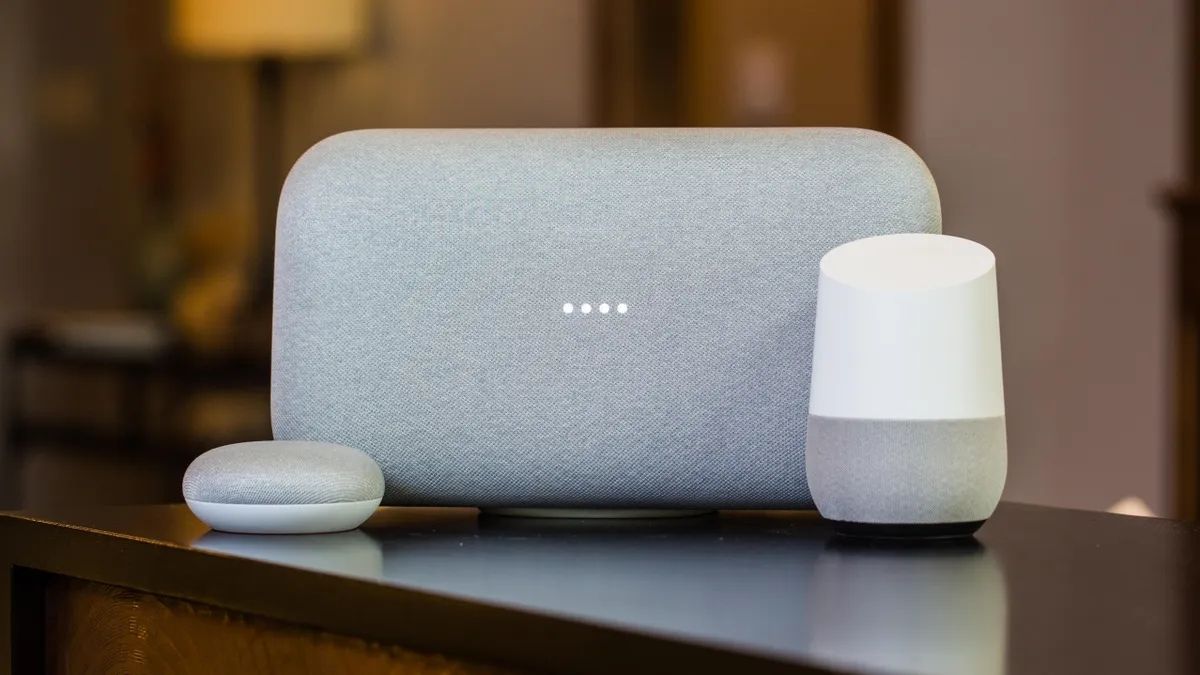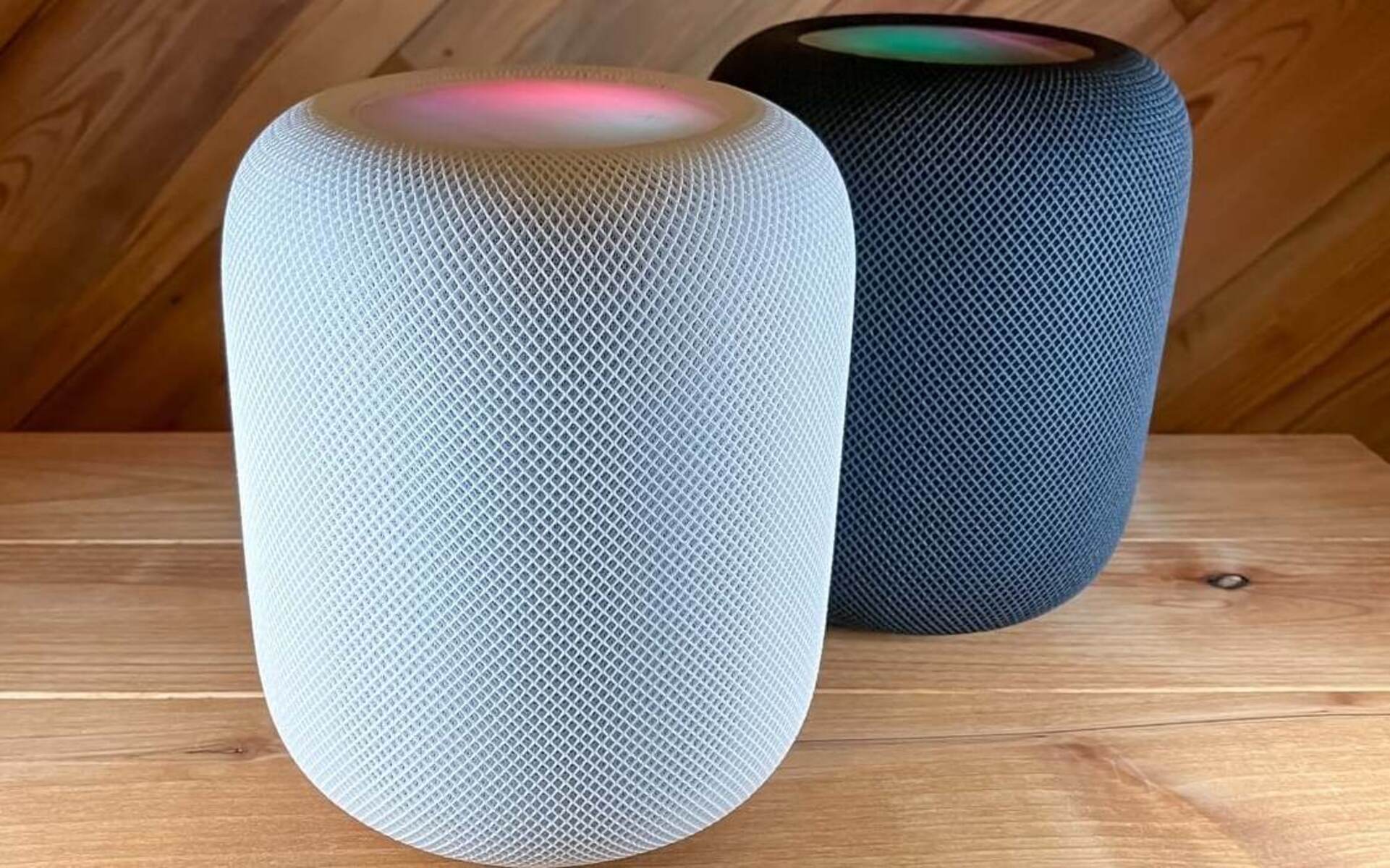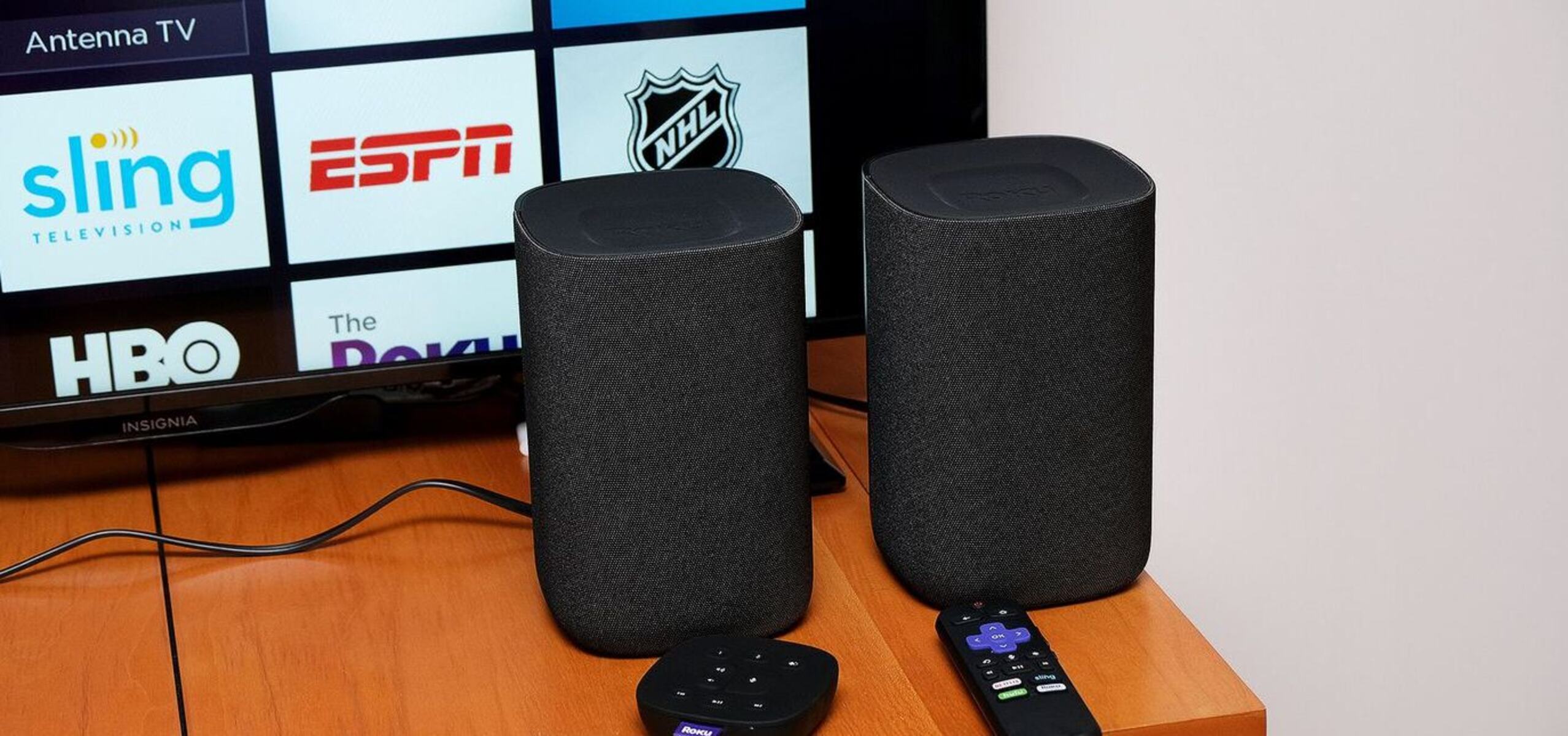Introduction
Welcome to the world of smart speakers, an innovative and increasingly popular segment in the realm of technology. These voice-controlled devices have revolutionized the way we interact with our homes, allowing us to control various tasks and access information with just a few simple voice commands. In this article, we will explore Apple’s entry into the smart speaker market and delve into the unique features and benefits of their smart speaker.
Smart speakers have quickly gained traction among tech-savvy consumers, offering a seamless blend of convenience and functionality. With the ability to connect to other smart devices in the home, these speakers serve as a central hub for controlling everything from lights and thermostats to music and entertainment.
Apple, known for its cutting-edge technology and user-friendly interfaces, has joined the ranks of smart speaker manufacturers with their own offering. With Apple’s reputation for delivering high-quality products, consumers have eagerly awaited the release of their smart speaker.
In this article, we will take an in-depth look at Apple’s smart speaker, examining its key features, design, ease of use, privacy and security measures, sound quality, and more. Whether you’re considering purchasing a smart speaker or simply want to stay informed about the latest tech trends, this article will provide valuable insights into Apple’s foray into the smart speaker market.
So, grab a cup of coffee and get ready to embark on a journey to discover what sets Apple’s smart speaker apart from the competition. Let’s dive in!
What is a Smart Speaker?
A smart speaker is a voice-activated device that combines the functionalities of a traditional speaker with smart technology, enabling users to perform a wide range of tasks using voice commands. These devices typically connect to the internet and can be controlled through virtual assistants, such as Apple’s Siri, Amazon’s Alexa, or Google Assistant.
One of the key features of a smart speaker is its ability to respond to voice commands. With just a simple “Hey Siri” or “Alexa,” users can ask questions, play music, control smart home devices, set reminders, check the weather, and much more. The voice recognition technology ensures that the speaker understands and accurately executes the requested tasks.
Smart speakers act as a central hub for controlling other smart devices in your home. They can communicate with compatible devices, such as smart lightbulbs, thermostats, security cameras, and even kitchen appliances. This connectivity allows users to create a seamless and integrated smart home ecosystem, where they can control multiple devices simultaneously with voice commands.
In addition to their practical functionalities, smart speakers also provide entertainment options. Users can stream music from popular platforms, listen to podcasts, or enjoy audiobooks. Some speakers even offer multi-room audio capabilities, allowing you to synchronize music playback throughout your home. This immersive audio experience adds a new level of enjoyment to your everyday activities.
Smart speakers typically incorporate artificial intelligence (AI) technology, which enables them to learn and adapt to users’ preferences over time. They can personalize responses, provide recommendations, and even anticipate users’ needs based on their habits and interactions.
With the increasing integration of smart home devices and the rise of IoT (Internet of Things) technology, smart speakers have become a convenient and efficient way to control and manage your home. They offer a hands-free experience, eliminating the need to fumble with buttons or navigate through apps on your smartphone or tablet.
Now that we have a better understanding of what smart speakers are and how they function, let’s explore Apple’s entry into the smart speaker market and discover what sets their offering apart.
Apple’s Entry into the Market
Apple, a pioneering force in the technology industry, made its highly anticipated entry into the smart speaker market with the launch of the Apple HomePod. Released in [year], the HomePod combines Apple’s renowned design aesthetics with powerful features and advanced technology.
With the HomePod, Apple aimed to create a smart speaker that not only delivers exceptional audio quality but also seamlessly integrates with their existing ecosystem of products and services. By leveraging their expertise in hardware and software integration, Apple sought to provide users with a cohesive and user-friendly experience.
One of the key differentiators of Apple’s smart speaker is its emphasis on audio quality. The HomePod features a high-excursion woofer, coupled with a custom amplifier and seven tweeters, delivering immersive, room-filling sound. Apple’s innovative audio technology dynamically analyzes the acoustics of a room and adjusts the sound output accordingly, creating an optimal listening experience.
Apple’s dedication to privacy and security is evident in the design of the HomePod. With built-in encryption and strong user authentication, Apple ensures that user data remains secure. Additionally, the HomePod’s voice recognition technology is designed to only activate when the “Hey Siri” command is recognized, further protecting user privacy.
To integrate seamlessly with Apple’s ecosystem, the HomePod features Siri, Apple’s virtual assistant. Users can rely on Siri to perform a wide range of tasks, such as playing music, answering questions, setting reminders, and controlling connected smart home devices. Siri’s deep integration with Apple’s services, including Apple Music and HomeKit, allows for a seamless and intuitive user experience.
Apple’s dedication to providing a visually appealing and user-friendly interface continues with the HomePod. The touch-sensitive top panel allows users to easily control playback, adjust volume, and invoke Siri. The sleek and compact design of the HomePod blends seamlessly with any décor, making it a stylish addition to any room.
Apple’s commitment to quality and innovation is evident in their entry into the smart speaker market. By creating a device that prioritizes audio excellence, integrates seamlessly with their ecosystem, and maintains strong privacy and security measures, Apple has positioned the HomePod as a standout option for consumers.
Now that we have explored Apple’s entry into the smart speaker market, let’s delve into the key features and capabilities of the HomePod and discover why it has garnered attention and admiration from tech enthusiasts around the world.
Key Features of Apple’s Smart Speaker
Apple’s smart speaker, the HomePod, offers a host of impressive features that set it apart from the competition. From its powerful audio capabilities to its seamless integration with Apple’s ecosystem, the HomePod delivers a premium smart speaker experience.
One of the standout features of the HomePod is its exceptional sound quality. With an array of seven tweeters and a high-excursion woofer, the HomePod delivers immersive, room-filling sound that rivals traditional stereo setups. Apple’s innovative audio technology, coupled with real-time acoustic modeling, adjusts the sound output to match the room’s unique characteristics, ensuring optimal audio performance.
Thanks to Siri, Apple’s voice assistant, the HomePod offers a hands-free experience that allows users to control a wide range of tasks with just their voice. Whether you want to play music, set timers and reminders, check the weather, or control compatible smart home devices, Siri is ready to assist. The advanced voice recognition technology ensures accurate and reliable responses, even in noisy environments.
As part of Apple’s ecosystem, the HomePod seamlessly integrates with other Apple devices. With AirPlay 2 support, users can stream audio from their iPhone, iPad, or Mac directly to the HomePod, creating a multi-room audio experience. Users can also control playback and adjust volume levels from their Apple Watch or the Control Center on their iOS device.
HomePod’s compatibility with Apple Music provides a seamless music streaming experience. With access to Apple’s extensive music library and personalized recommendations, users can enjoy their favorite songs, playlists, and Apple Music exclusives with just a simple voice command. Apple Music subscribers can even ask Siri to recommend songs based on their listening preferences.
HomeKit integration is another notable feature of the HomePod. HomeKit allows users to control their smart home devices using Siri commands. This means users can adjust the lights, thermostat, security cameras, and more, all with voice control through the HomePod. The HomePod serves as a centralized hub for managing and controlling the various devices in your smart home.
In terms of design, the HomePod is a sleek and stylish addition to any space. With a seamless mesh fabric covering and a compact cylindrical shape, it seamlessly blends into any room. The touch-sensitive top panel allows for easy control of playback, volume, and Siri activation.
Lastly, privacy and security are key considerations for Apple, and the HomePod is no exception. Built-in encryption and secure authentication protocols ensure that user data and interactions remain private. The HomePod only activates Siri after hearing the “Hey Siri” command, giving users peace of mind when it comes to their privacy.
With its impressive sound quality, seamless integration, smart home control, and commitment to privacy, the HomePod showcases Apple’s dedication to delivering a premium smart speaker experience. As we continue to explore the HomePod, we will delve into more specific aspects, such as sound quality, design, ease of use, and privacy and security features.
Siri Integration
One of the standout features of Apple’s smart speaker, the HomePod, is its seamless integration with Siri, Apple’s intelligent voice assistant. Siri is not only a voice control interface but also a powerful virtual assistant that brings a range of capabilities to the HomePod.
With Siri integration, users can control various aspects of the HomePod using just their voice. They can ask Siri to play music from their favorite artists or genres, shuffle playlists, or even request specific songs. Siri’s integration with Apple Music ensures a vast library of songs is at your disposal, and with personalized recommendations, you can discover new music tailored to your tastes.
Beyond music, Siri can answer questions and provide information on a wide range of topics. Whether you want to know the weather forecast, get real-time sports scores, or access the latest news headlines, Siri has you covered. By using natural language understanding, Siri can provide accurate and relevant responses to your queries.
Thanks to Siri’s ability to interact with other Apple devices, the HomePod becomes an even more powerful hub for controlling your digital ecosystem. You can use Siri to send messages, make phone calls, set reminders, create calendar events, and more, all without touching your iPhone or iPad. Siri’s seamless integration with Apple’s ecosystem ensures that you can stay connected and productive with just your voice.
As a smart assistant, Siri enabled on the HomePod also offers the convenience of controlling compatible smart home devices. With a simple voice command, you can adjust the lights, change the thermostat settings, lock doors, and even control your home security system. Siri’s extensive compatibility with HomeKit-enabled devices allows for easy and centralized control of your smart home ecosystem.
Additionally, Siri’s voice recognition technology ensures a personalized experience for each user. Siri can recognize different voices and tailor responses and recommendations based on individual preferences. This makes the HomePod a perfect addition to any household, as each family member can access their personalized music library, calendar appointments, and other personalized features.
Apple’s continuous investment in Siri’s development and improvement reflects their commitment to delivering a top-notch voice assistant experience. With a strong foundation of artificial intelligence and machine learning, Siri on the HomePod can understand natural language, learn from user interactions, and continuously improve its performance over time.
With Siri integration, the HomePod offers users a convenient and intuitive way to control their music, manage their daily tasks, stay informed, and interact with their smart home devices. Siri’s presence makes the HomePod an invaluable addition to any Apple enthusiast’s ecosystem, providing a seamless and hands-free experience.
HomeKit Compatibility
Apple’s smart speaker, the HomePod, offers seamless integration with HomeKit, Apple’s smart home platform. This compatibility allows users to control and manage their smart home devices efficiently and conveniently through the HomePod, creating a centralized hub for their connected home ecosystem.
HomeKit compatibility enables users to control a wide range of smart devices using just their voice. With a simple Siri command, users can adjust the lighting, change the temperature, control smart appliances, lock doors, and even monitor home security cameras. The HomePod acts as a bridge, connecting and coordinating communication between all HomeKit-enabled devices.
With HomeKit, the HomePod can create customized scenes and routines, automating multiple devices to work together seamlessly. For example, you can create a “Good Morning” scene that turns on the lights, adjusts the thermostat, and starts playing your favorite morning playlist, all with a single voice command to the HomePod.
HomeKit also offers advanced features like geo-fencing, allowing users to automate certain actions based on their location. For instance, when you leave home, you can set HomeKit to automatically turn off lights, lower the thermostat, and activate the security system. When you return, the HomePod can welcome you back by turning on lights and adjusting the temperature to your preferred settings.
Another significant advantage of HomeKit compatibility is its strong focus on privacy and security. Apple ensures that all HomeKit-enabled devices adhere to strict encryption and security protocols, protecting personal information and ensuring secure communication between devices and the HomePod. This commitment to privacy is especially crucial when it comes to smart home devices, as they often handle sensitive data.
Furthermore, HomeKit compatibility allows users to control their smart devices remotely, even when they’re away from home. With the Home app on their iPhone or iPad, users can access and control their HomeKit-enabled devices, including those connected to the HomePod, from anywhere in the world. Whether you forgot to turn off a light or want to check the security of your home, the HomePod and HomeKit make it easy and convenient.
HomeKit’s extensive compatibility with a wide range of smart home devices from various manufacturers also ensures flexibility and choice for users. Whether you have smart lights, thermostats, door locks, or security cameras from different brands, you can centralize their control through the HomePod and the Home app, reducing the need for multiple apps and simplifying your smart home management.
Apple’s commitment to creating a secure, user-friendly, and integrated smart home ecosystem is evident in the HomePod’s HomeKit compatibility. With the ability to control and automate a wide range of smart devices using just your voice, the HomePod transforms into the control center of your connected home, offering convenience, flexibility, and peace of mind.
Sound Quality
One of the standout features of Apple’s smart speaker, the HomePod, is its exceptional sound quality. Designed with audiophiles and music lovers in mind, the HomePod delivers a powerful and immersive audio experience that sets it apart from other smart speakers on the market.
The HomePod boasts a sophisticated audio system that combines an array of seven tweeters with a high-excursion woofer. This arrangement allows the HomePod to produce rich, detailed, and balanced sound throughout a room. The tweeters ensure crystal-clear high frequencies and vocals, while the woofer delivers deep and impactful bass.
What sets the HomePod’s sound quality apart is its advanced audio technology that adapts to the acoustics of the room. Using spatial awareness, the HomePod analyzes the environment and dynamically adjusts the sound output to optimize the listening experience. This means that regardless of the room’s size, shape, or furniture placement, the HomePod delivers consistent and impressive audio quality.
Additionally, the HomePod uses beamforming technology to direct sound to specific areas, creating a focused and immersive listening experience. By directing sound towards you and away from surrounding walls and objects, the HomePod ensures that you hear every detail with clarity, even in larger spaces.
Another notable aspect of the HomePod’s sound quality is its ability to deliver a true stereo sound. When you have two HomePods in the same room, they can automatically detect each other and create a stereo pair. This pairing creates a wider soundstage, separating the left and right audio channels, and further enhances the immersive listening experience.
Apple’s commitment to delivering high-quality audio extends beyond just music playback. The HomePod uses advanced audio processing to enhance voice recognition and make Siri’s responses crisp and clear, even in noisy environments. This ensures that whether you’re asking a question or giving a command, Siri on the HomePod understands you accurately and responds promptly.
In terms of audio codecs, the HomePod supports AAC (Advanced Audio Coding), which offers high-quality audio streaming. This ensures that when you stream music from your Apple devices or compatible third-party apps, you’ll experience the music in its full fidelity and without any noticeable loss in quality.
With its impressive sound quality, adaptive audio technology, stereo pairing capabilities, and support for high-quality audio codecs, the HomePod sets a new standard for smart speaker sound performance. Whether you’re listening to your favorite album, enjoying a podcast, or watching a movie, the HomePod’s audio prowess transforms your living space into a captivating sonic experience.
Design and Build
Apple is renowned for its commitment to sleek and aesthetically pleasing designs, and the HomePod is no exception. The smart speaker features a compact yet elegant design that seamlessly blends into any home decor.
The HomePod’s external housing is covered in a seamless mesh fabric that not only enhances its visual appeal but also allows sound to transmit clearly and evenly in all directions. The fabric comes in a choice of colors, enabling users to select the option that best matches their personal style and the surrounding environment.
Measuring just under 7 inches tall, the HomePod has a cylindrical shape that gives it a modern and sophisticated look. This well-crafted design makes the speaker a standout element in any room, whether it’s placed on a shelf, side table, or kitchen counter.
The top panel of the HomePod is touch-sensitive and features a minimalist look with a subtle Apple logo. This panel provides users with intuitive controls for adjusting the volume, navigating tracks, and invoking Siri without the need for voice commands. The responsiveness and simplicity of the touch controls add to the overall user experience and convenience of using the HomePod.
Apple has also paid meticulous attention to the build quality of the HomePod. The speaker feels sturdy and well-crafted, with a weight that gives it a premium and substantial feel. This solid build ensures stability and durability, making the HomePod a long-lasting addition to your home entertainment setup.
Furthermore, the HomePod features an array of innovative technologies that enhance both its design and functionality. For instance, the speaker includes a unique internal bass-EQ microphone that automatically analyzes and adjusts the low frequencies to optimize sound performance based on the speaker’s placement in the room.
Another thoughtful design aspect of the HomePod is its power cable. The built-in power cable is elegantly integrated into the base of the speaker, creating a clean and clutter-free look. This design choice eliminates the need for separate power adapters and cables, further enhancing the minimalist and sleek appearance of the HomePod.
Overall, Apple’s attention to detail in design and build quality is evident in the HomePod. The speaker’s compact and stylish form, seamless mesh fabric covering, touch-sensitive controls, and solid build make it an attractive addition to any room. With its blend of aesthetics and functionality, the HomePod seamlessly integrates into your living space, delivering exceptional sound while complementing your decor.
Ease of Use
Apple’s HomePod not only delivers impressive sound quality and smart capabilities but also prioritizes ease of use. Designed with the user experience in mind, the HomePod offers a seamless and intuitive interface that allows users to effortlessly interact with the speaker and access its features.
The setup process for the HomePod is quick and straightforward. Simply plug in the speaker, and it will automatically detect nearby Apple devices. Through a simple on-screen prompt, users can connect their iPhone or iPad to the HomePod and complete the setup process within minutes. This streamlined setup ensures that even users who are not technology-savvy can easily get started with their HomePod.
Once set up, controlling the HomePod is a breeze. The touch-sensitive top panel of the speaker allows users to easily adjust the volume, play and pause music, skip tracks, and invoke Siri with just a tap or a touch gesture. This tactile and intuitive control scheme eliminates the need for complex button configurations, making it effortless to navigate and operate the HomePod.
With Siri integration, interacting with the HomePod becomes even more convenient. Users can activate Siri with a simple “Hey Siri” voice command, and from there, they can ask questions, make requests, control smart home devices, and much more. Siri’s natural language understanding ensures that users can communicate with the HomePod in a natural and conversational manner.
In addition, the HomePod seamlessly syncs with other Apple devices, providing a consistent and effortless user experience. Users can control playback and adjust volume levels from their iPhone, iPad, or Apple Watch, or use the Control Center on their iOS device to manage HomePod settings. This integration across devices ensures that users can control their HomePod from their preferred Apple device, adding to the convenience and familiarity of the user experience.
Another aspect that enhances the ease of use is the integration with Apple Music. Users can effortlessly access their Apple Music library, playlists, and personalized recommendations by simply asking Siri on the HomePod. The deep integration ensures a seamless music streaming experience, eliminating the need for additional apps or manual setup.
Furthermore, the collaborative nature of Siri on the HomePod allows multiple users to access their personalized music profiles, calendars, and reminders. Siri can differentiate between voices and provide individualized responses based on the identified user, enhancing the personalization and ease of use for each family member.
Overall, Apple has taken great care to ensure that the HomePod delivers an intuitive and user-friendly experience. From the seamless setup process to the effortless touch controls, Siri integration, and integration with other Apple devices, using the HomePod is a delightfully simple and hassle-free experience.
Privacy and Security
Privacy and security are paramount considerations when it comes to smart devices, and Apple’s HomePod is designed with these principles in mind. Apple has long been known for its strong stance on user privacy, and the HomePod reflects their commitment to protecting user data and ensuring a secure smart speaker experience.
First and foremost, the HomePod’s voice recognition technology ensures that it only activates Siri when it hears the “Hey Siri” command. This means that the HomePod is actively listening for the wake word, and it does not process or store any audio data until it hears the specific activation phrase. This feature ensures that the HomePod respects user privacy and provides peace of mind regarding voice data collection.
Additionally, the HomePod incorporates robust encryption and strong user authentication measures. With built-in encryption protocols, Apple ensures that all communication between the HomePod and other devices is secure. This protects user data, including personal information, music preferences, and smart home interactions from unauthorized access.
HomeKit, Apple’s smart home platform, also plays a crucial role in ensuring privacy and security. With HomeKit compatibility, the HomePod acts as a secure hub for managing and controlling connected smart home devices. HomeKit uses end-to-end encryption to securely communicate between devices, preventing unauthorized access to your smart home ecosystem.
Furthermore, Apple’s dedication to user privacy extends to their commitment to limit data collection. While the HomePod processes voice commands locally on the device, Apple does not associate this data with the user’s Apple ID. This means that personalized preferences and interactions are stored locally on the HomePod and are not tied to a specific individual’s Apple account or used for targeted advertising.
Another critical aspect of privacy and security is Apple’s stringent vetting process for third-party apps and services. Apps that integrate with the HomePod are required to adhere to Apple’s privacy and security guidelines, ensuring that any data shared between the HomePod and these apps is handled securely and responsibly.
Apple also provides transparent and accessible privacy controls for users to manage their HomePod’s privacy settings. Through the settings on their connected Apple devices, users can choose which data is shared with the HomePod, control access to personal information, and even delete their voice history.
With privacy and security at the forefront, Apple’s HomePod offers users a smart speaker experience that prioritizes the protection of personal data. The combination of voice recognition technology, encryption, secure authentication, and stringent vetting of third-party apps ensures that user interactions and data remain private and secure.
Price and Availability
Apple’s HomePod smart speaker is available for purchase at a competitive price point, considering its premium features and build quality. The exact price may vary depending on the region and any ongoing promotions, but generally, the HomePod is priced in line with other high-end smart speakers.
While the HomePod offers exceptional sound quality, Siri integration, and seamless Apple ecosystem compatibility, it’s essential to consider the cost in comparison to other smart speakers on the market. Users should assess their specific needs, preferences, and budget to determine if the HomePod aligns with their requirements.
Apple typically offers the HomePod for sale on its official website, as well as in Apple retail stores and authorized resellers. Availability may vary by country or region, but Apple continuously expands the HomePod’s availability to reach a broader audience.
Additionally, Apple often provides software updates to improve the HomePod’s performance and introduce new features. These updates are typically available to HomePod owners at no additional cost, ensuring that users can continue to enjoy an enhanced experience and added functionality over time.
It’s worth noting that, like any technological device, the HomePod’s price and availability may be subject to change as new models are released or as market conditions fluctuate. Therefore, it’s always advisable to refer to the official Apple website or authorized retailers for the most up-to-date information on pricing and availability.
Overall, the HomePod offers a compelling value proposition in terms of its sound quality, integrations, and privacy features. By carefully considering the price and availability, users can make an informed decision and determine if the HomePod aligns with their budget and requirements.
Conclusion
Apple’s foray into the smart speaker market with the HomePod has undoubtedly made an impact. With its exceptional sound quality, seamless Siri integration, compatibility with the Apple ecosystem, and strong focus on privacy and security, the HomePod offers a premium smart speaker experience for users.
The HomePod’s sound quality is unparalleled, delivering immersive and room-filling audio that can rival traditional stereo setups. Apple’s attention to detail in audio engineering ensures that users can enjoy their favorite music, podcasts, and more with clarity and depth.
Siri integration is a standout feature of the HomePod, allowing users to effortlessly control their music, manage their daily tasks, and interact with their smart home devices using just their voice. Siri’s natural language understanding and deep integration with Apple services make the HomePod an excellent companion for any Apple enthusiast.
HomeKit compatibility further enhances the HomePod’s functionality, allowing users to create a centralized hub for managing and controlling their smart home devices. With HomeKit’s strong focus on privacy and security, users can trust that their personal information is protected while enjoying the convenience of a connected home.
The HomePod’s design and build quality also reflect Apple’s commitment to craftsmanship and aesthetics. Its sleek, compact form and seamless mesh fabric covering make it a stylish addition to any room, while the touch-sensitive top panel adds intuitive control without compromising on simplicity.
When considering the HomePod, users should weigh the price and availability against their budget and specific needs. While the HomePod offers a premium smart speaker experience, it’s essential to assess whether its features and compatibility align with individual preferences.
In conclusion, Apple’s HomePod has established itself as a top contender in the smart speaker market. With its impressive sound quality, Siri integration, HomeKit compatibility, and sleek design, it offers a compelling option for those seeking a powerful and user-friendly smart speaker. Whether you’re a music enthusiast, a smart home aficionado, or simply looking for an excellent all-in-one device, the HomePod aims to deliver a premium audio experience while seamlessly integrating into your Apple ecosystem.







